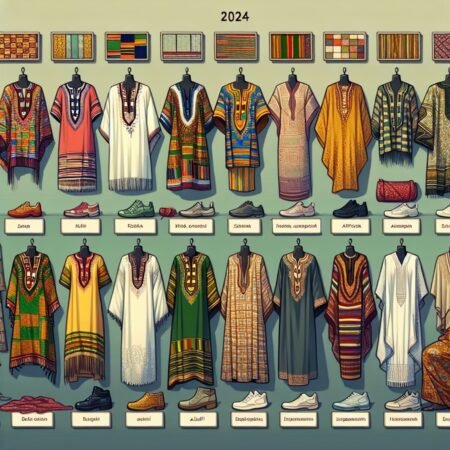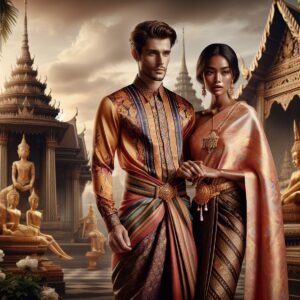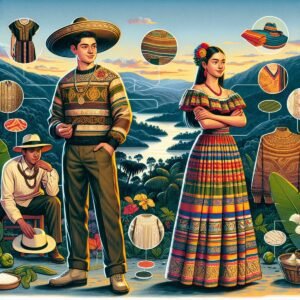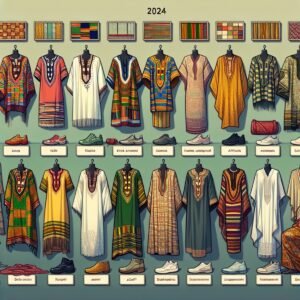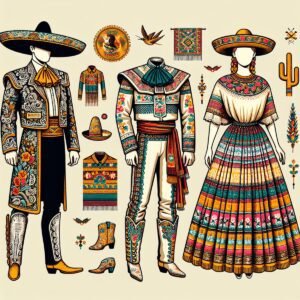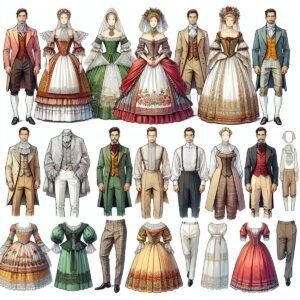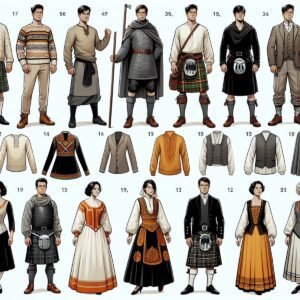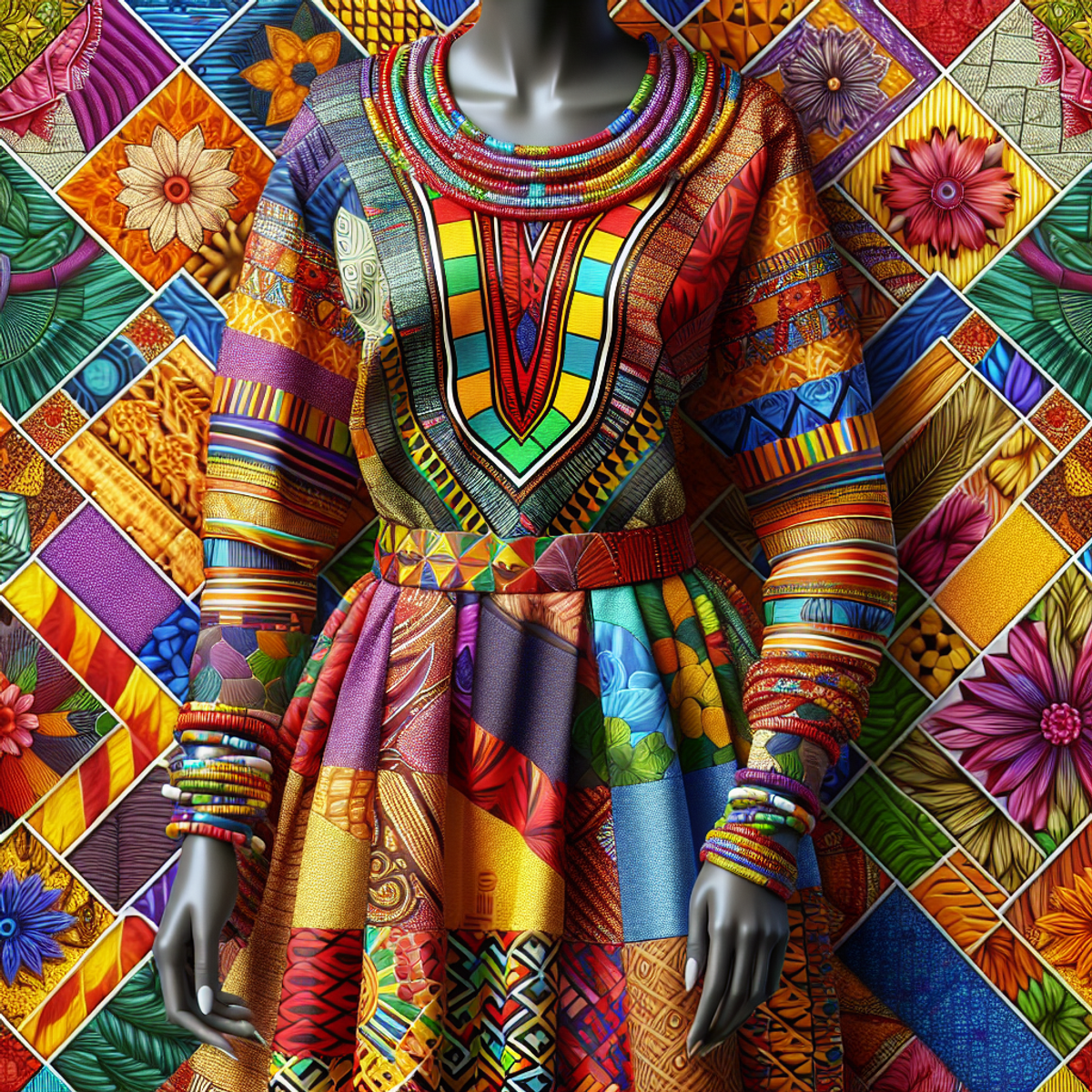
Introduction to African Traditional Clothing
Traditional African clothing represents the rich and diverse cultural heritage of the continent, featuring a wide array of styles, patterns, and garments that hold deep significance in African societies. From colorful textiles to intricately embroidered robes, traditional African clothing reflects the unique identities and histories of various regions and ethnic groups.
In this comprehensive guide, you will explore:
- The history of traditional African clothing
- The diversity of African cultural dresses
- The materials, techniques, and regions that have influenced traditional African fashion
By the end of this guide, you will:
- Understand the importance of traditional African clothing in different cultural contexts
- Learn about significant regions and materials in African fashion
- Discover contemporary trends in traditional African attire
Whether you love fashion, are interested in different cultures, or simply want to learn more about traditional clothing, this guide is for you!
The Rich Diversity of Traditional African Clothing
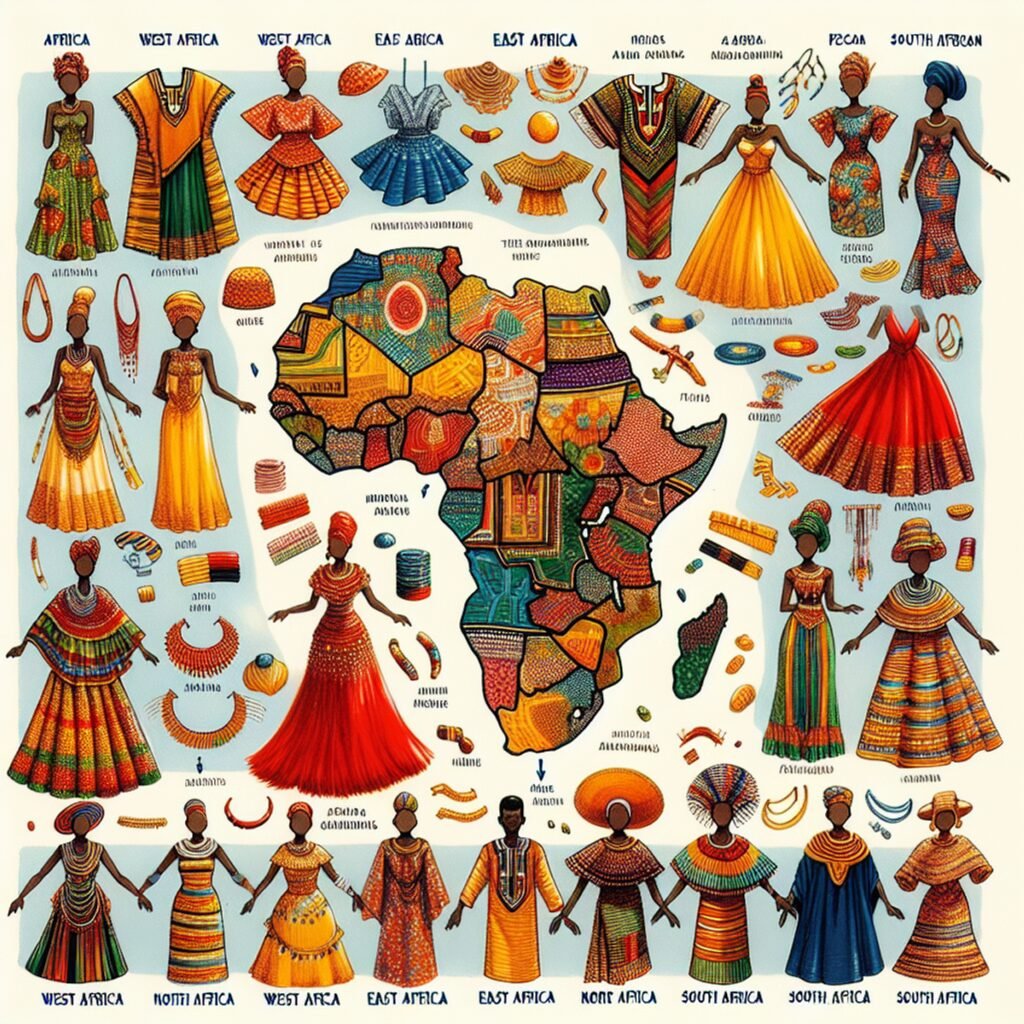
Traditional African clothing is a vibrant and diverse reflection of the cultures and heritage of the continent. It encompasses a wide range of styles and garments, each with its own unique features and cultural significance. Let’s explore some of the key types of traditional African clothing:
1. African Traditional Dresses
- These dresses come in various styles, colors, and patterns, representing the diversity of African cultures. They are often made from colorful fabrics such as Ankara, Kente, or Kitenge.
- Each dress has its own distinct features, such as the flowing Boubou dress from West Africa or the fitted Mermaid dress from East Africa.
- Traditional dresses are not only worn on special occasions but also as everyday attire, reflecting the pride and identity of the wearer.
2. African Traditional Wedding Dresses
- Weddings hold great importance in African communities, and traditional attire plays a central role in these celebrations.
- Wedding dresses vary across regions and tribes, showcasing different styles and symbolism. For example, the Zulu culture in South Africa embraces vibrant colors and intricate beadwork in their wedding attire.
- Nigerian weddings are known for their elaborate Gele headwraps and Aso Ebi fabrics, which are coordinated outfits worn by family members and friends to show unity and support for the couple.
The rich diversity of traditional African clothing showcases the versatility and beauty of these garments. From everyday wear to special occasions like weddings, these clothing styles are deeply rooted in African culture and serve as a symbol of identity and pride.
Influential Regions for Traditional African Fashion
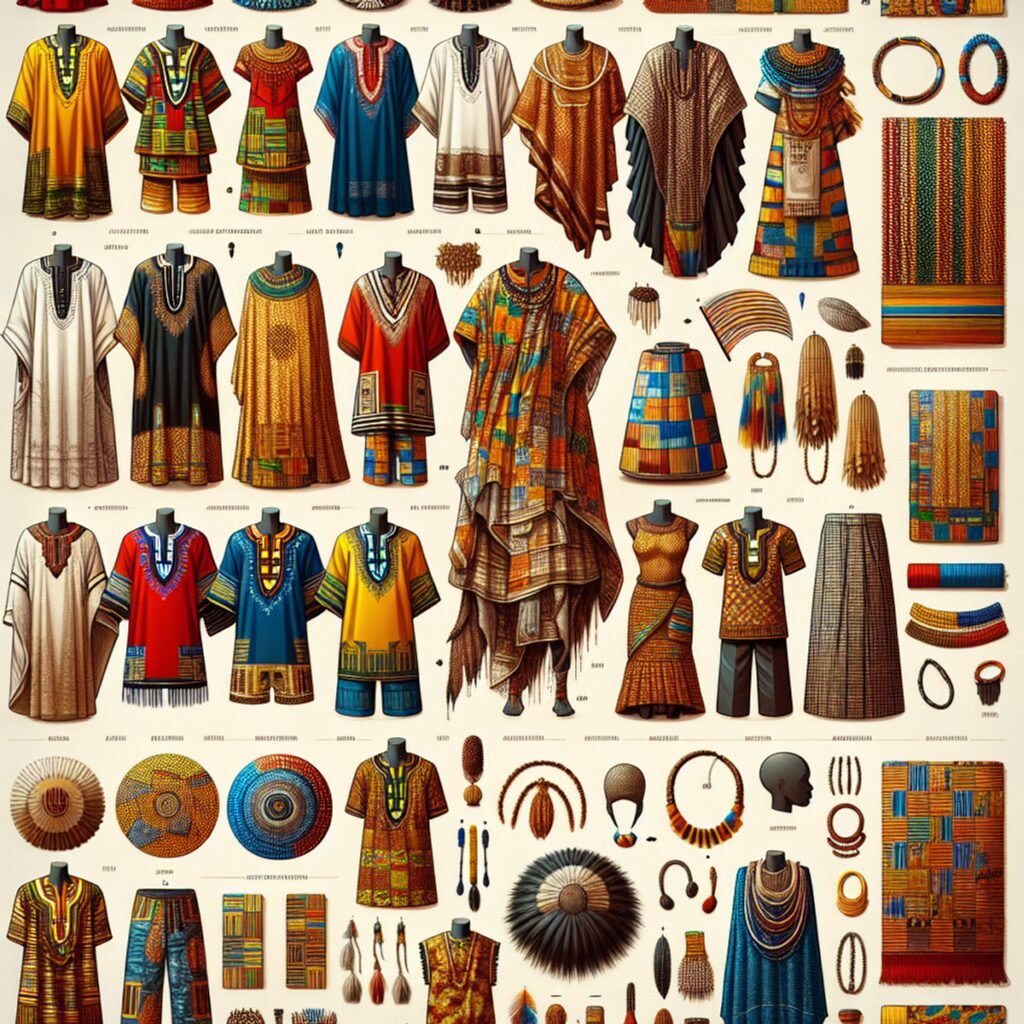
Traditional African fashion is a testament to the rich diversity and cultural heritage of the continent. Throughout Africa, there are specific regions that have had a major impact on the development of traditional clothing styles, showcasing their unique techniques and designs. Let’s explore some of these influential regions:
1. Ghana and the Significance of the Akan Tribe
Ghana is known for its vibrant and colorful traditional attire, with one of the most renowned garments being the Kente cloth. The Akan tribe in Ghana has a deep-rooted history and cultural importance associated with this fabric. Kente cloth is handwoven using brightly colored silk threads, creating intricate patterns and designs that hold symbolic meanings. Each pattern represents a specific concept or value, such as wisdom, royalty, or spirituality. In addition to Kente cloth, other traditional garments from the Akan tribe include the Batakari (a loose-fitting smock) and the Fugu (a wraparound skirt).
2. Yoruba Fashion Heritage in Nigeria
The Yoruba people in Nigeria have a rich fashion heritage that is deeply intertwined with their cultural identity. One iconic element of Yoruba fashion is the gele headwrap worn by Yoruba women. Gele is a large head tie made from vibrant and colorful fabrics, skillfully wrapped around the head to create elaborate styles. It serves as a symbol of elegance and pride among Yoruba women. In addition to gele, Yoruba fashion also encompasses other distinctive elements such as agbada (a flowing gown worn by men) and iro and buba (a wrapper and blouse worn by women).
3. The Vibrant Textiles of the Ewe People in West Africa
The Ewe people, primarily found in Togo and Ghana, are known for their vibrant textiles and intricate beadwork. Ewe traditional attire incorporates colorful fabrics adorned with geometric patterns and motifs. Beadwork is an integral part of Ewe fashion, with beads often used to embellish garments and accessories. Ewe women are particularly skilled in creating intricate beadwork, which adds a touch of elegance and cultural significance to their attire.
4. Diversity in the Africa Great Lakes Region and the Fashion Capital of Addis Ababa, Ethiopia
The Africa Great Lakes region, which includes countries like Uganda, Rwanda, and Burundi, boasts a diverse range of traditional dress styles. Each country within this region has its unique cultural heritage reflected in its traditional clothing. For example, Ugandan traditional attire includes the Gomesi, a floor-length dress characterized by its bold colors and patterns. In Rwanda, the traditional garment known as the mushanana is worn during important ceremonies and events.
In Ethiopia’s capital city of Addis Ababa, there is a thriving fashion scene that blends traditional elements with modern aesthetics. Traditional Ethiopian clothing is often made from handwoven fabrics such as shemma or tibeb. These fabrics feature vibrant colors and intricate patterns that reflect the country’s rich cultural history as seen here.
5. Igbo Fashion Traditions in Eastern Nigeria
The Igbo people in Eastern Nigeria have a distinct fashion tradition
Materials and Techniques in Traditional African Textile Production
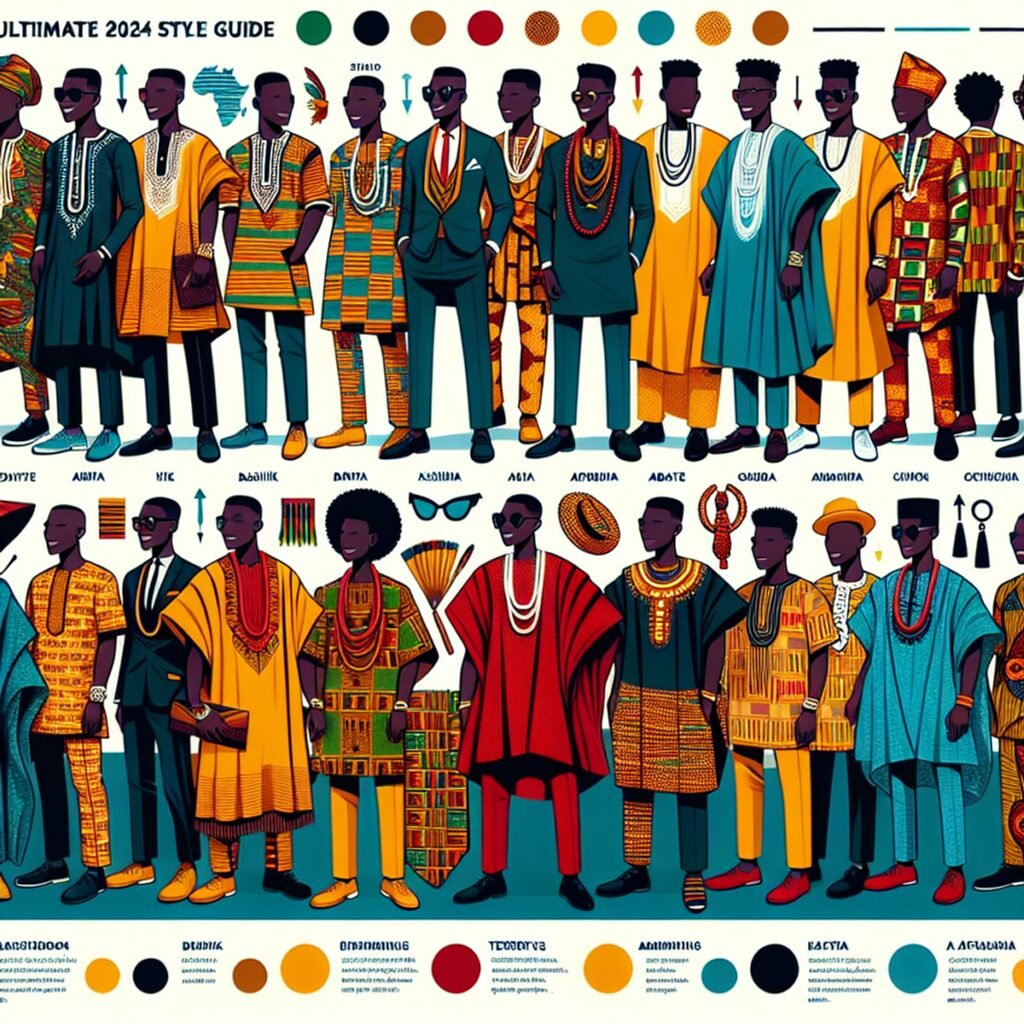
In this section, we will explore the key materials used in creating traditional African textiles, as well as the unique dyeing and embellishment methods employed by artisans.
Importance of Cotton and Silk Fabrics
Cotton and silk fabrics are essential elements of traditional African textile production. Let’s delve into their significance:
- Cotton: This natural fiber has a long history in Africa, where it has been cultivated and woven into cloth for centuries. Regions like West Africa are particularly known for their intricate cotton fabrics.
- Silk: Prized for its luxurious feel, silk is often used in ceremonial garments within African cultures.
The Art of Indigo Dyeing
Indigo dyeing is a revered tradition in many African cultures, known for producing the deep blue hues synonymous with African textiles. Here, we’ll explore various indigo dyeing techniques:
- Tie-Dye Methods: This technique involves tying or folding fabric in different patterns before immersing it in indigo dye.
- Resist-Dye Techniques: Processes like Adire in Nigeria and bogolanfini (mud cloth) in Mali utilize materials such as wax or mud to create intricate patterns on fabric, which are then dyed with indigo.
Beads as a Form of Adornment
Beadwork holds profound cultural significance in many African communities, serving as a form of artistic expression and storytelling. Here, we’ll focus on its role in African fashion:
- Accessories: Intricately beaded jewelry, such as necklaces, bracelets, and earrings, are often crafted by hand and worn as symbols of identity or status.
- Garment Embellishments: Beads are also used to adorn traditional African clothing, either sewn directly onto the fabric or incorporated into decorative elements like tassels or fringe.
Through exploring these materials and techniques, we gain a deeper appreciation for the craftsmanship and cultural heritage woven into traditional African textiles.
Preserving and Promoting Traditional African Fashion
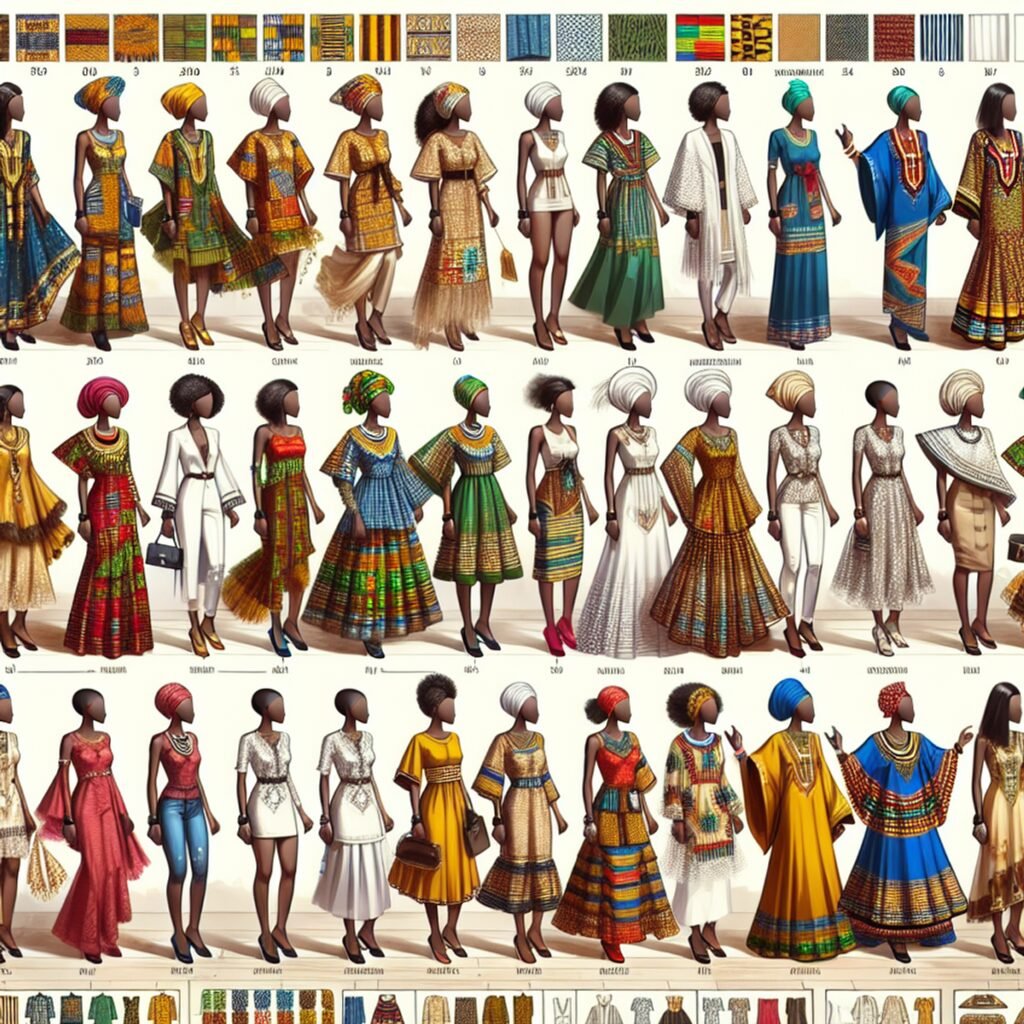
Preserving and promoting traditional African fashion is essential to honor the rich cultural heritage and ensure its continuity for future generations. For readers interested in purchasing or supporting authentic traditional African clothing, there are several resources available. Additionally, addressing the issue of cultural appropriation is important to respect and protect the significance of these garments.
1. Online Platforms for Buying Traditional African Clothing
The internet has made it easier to access traditional African clothing from anywhere in the world. Online platforms such as Etsy, Afrikrea, and L’Aviye offer a wide range of authentic African garments made by skilled artisans. These platforms connect buyers directly with sellers, providing an opportunity to support independent designers and small businesses.
2. Supporting Local Artisans and Markets
Another way to preserve traditional African fashion is by supporting local artisans and markets. Visiting local craft markets, such as the Maasai Market in Nairobi or the Oshodi Market in Lagos, allows you to interact with artisans directly and purchase their handmade creations. By buying directly from these artisans, you contribute to their livelihoods and help sustain their traditional craft.
3. The Role of African Fashion Designers in Revitalizing Traditional Craftsmanship
Many African fashion designers are dedicated to preserving and promoting traditional African fashion. They reinterpret traditional garments using contemporary designs while staying true to the cultural significance of the original pieces. Designers like Lisa Folawiyo, Christie Brown, and Maki Oh have gained international recognition for their innovative approaches to traditional African fashion.
By supporting these designers, you not only contribute to the preservation of traditional craftsmanship but also help create sustainable job opportunities within local communities.
Preserving and promoting traditional African fashion requires a collective effort from individuals, communities, designers, and consumers. By valuing and respecting these garments, we can ensure that they continue to be celebrated as symbols of cultural identity and pride for years to come.
The Future of Traditional African Clothing: Innovation and Sustainability
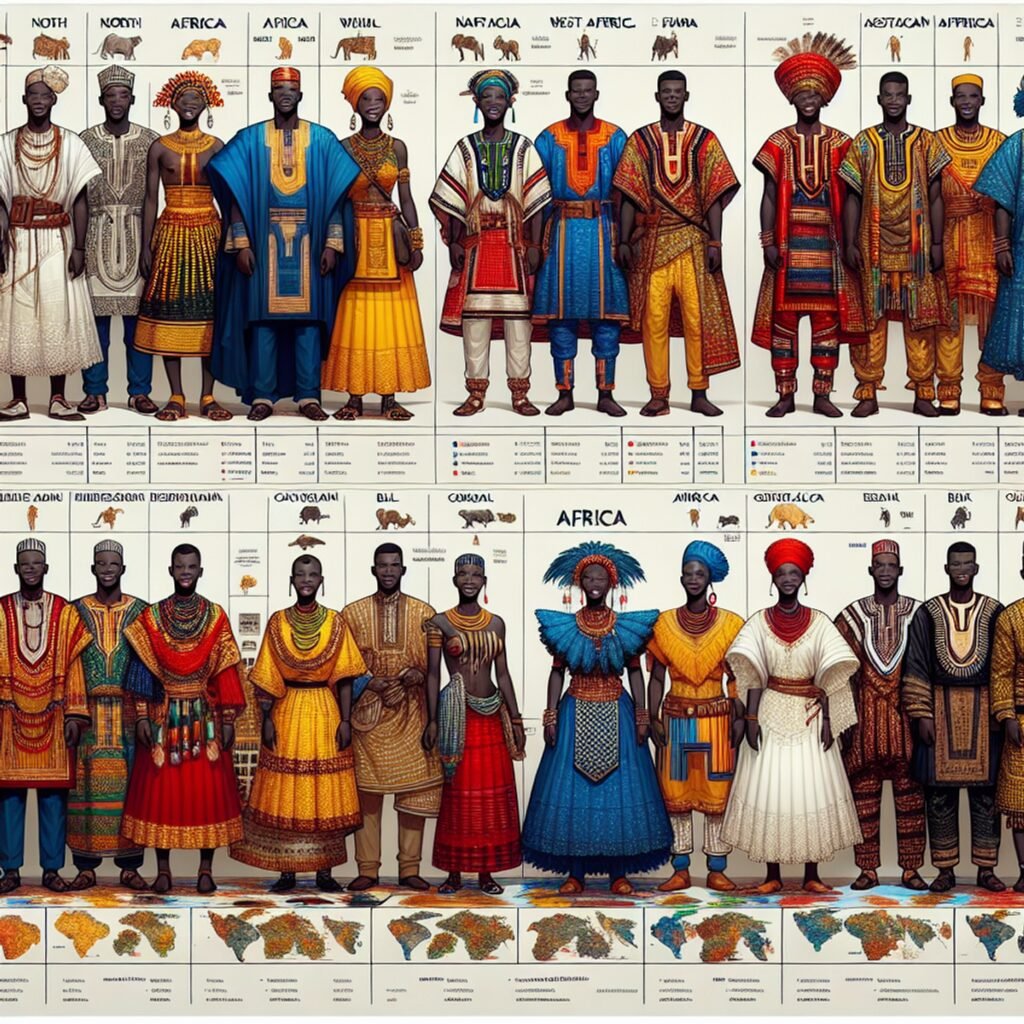
Traditional African fashion is changing in the modern world, with a focus on sustainability and innovation. This change is shaping the future of African fashion by combining eco-friendly practices and contemporary styles.
1. From Tradition to Runway: Contemporary African Fashion Designers
Contemporary African fashion designers are leading this change, blending traditional methods with modern styles. These designers are gaining recognition worldwide for their unique approach, which celebrates African heritage while appealing to global audiences.
“Contemporary African fashion designers are bridging the gap between tradition and modernity, creating garments that tell stories of our past while embracing the present.” – Lisa Folawiyo, Nigerian Fashion Designer
2. Embracing Sustainability in African Textile Production
Efforts to promote sustainable practices in African textile production are growing. Farmers are increasingly using organic methods to grow cotton, which reduces the environmental impact compared to conventional farming and also benefits local communities.
“We have a responsibility to our land and people. By choosing organic cotton, we are nurturing both.” – Maki Oh, Nigerian Fashion Designer
There is also a revival of natural dyes made from plants and minerals, providing an eco-friendly alternative to synthetic dyes. This shift towards sustainable textile production aligns with global initiatives to make the fashion industry more environmentally friendly.
3. The Role of Consumers in Supporting a More Sustainable African Fashion Industry
Consumers have an important role to play in supporting a more sustainable African fashion industry. By making mindful decisions when buying clothes, individuals can help preserve traditional craftsmanship and encourage ethical practices.
“Every time you choose to buy from a brand that values sustainability, you are casting a vote for a better future.” – Imad Eduso, Nigerian Fashion Designer
Another way for consumers to embrace sustainability in fashion is by upcycling old garments. This involves creatively transforming clothing items or supporting brands that prioritize upcycling, leading to less waste and a more circular fashion economy.
“There is beauty in giving new life to something old. Each upcycled piece carries a story within it.” – Lisa Folawiyo, Nigerian Fashion Designer
As traditional African fashion continues to change, embracing sustainability and innovation opens doors for a more ethical and environmentally conscious industry. With the combined efforts of designers, artisans, and consumers, the future of traditional African clothing holds promise for both cultural preservation and global significance.
Celebrating Cultural Heritage Through Clothing: The Significance of Traditional African Fashion
Traditional African clothing is more than just a fashion statement. It holds deep meaning and significance, representing the diverse cultures and histories of the continent. Here’s why traditional African fashion is so important:
1. Cultural Identity
Traditional African clothing tells the stories of different ethnic groups and communities. Each fabric, pattern, and decoration has a special meaning, passed down through generations. By wearing these garments, people can express their heritage and feel a sense of belonging.
2. Expression of Pride
Wearing traditional African attire is a way to proudly showcase one’s culture. It’s a statement of self-confidence and an affirmation of identity. In the world of fashion, it also shows that African styles are relevant and influential.
3. Preservation of Heritage
In a rapidly changing world, it’s crucial to preserve traditional practices and knowledge. By promoting and wearing traditional African clothing, communities can protect their cultural heritage from being lost or forgotten. This includes preserving ancient techniques like weaving, dyeing, and embroidery.
Overall, traditional African fashion represents much more than just clothing. It represents resilience, creativity, and the enduring spirit of Africa’s people. It serves as a reminder of the past and an inspiration for the future – a legacy that continues to thrive across borders and generations.
FAQs (Frequently Asked Questions)
What are some examples of traditional African clothing?
Examples of traditional African clothing include African Traditional Dresses and African Traditional Wedding Dresses. These garments showcase the wide range of styles and garments that make up traditional African fashion, highlighting its versatility and beauty.
What are some influential regions for traditional African fashion?
Influential regions for traditional African fashion include Ghana, Nigeria (Yoruba women), West Africa (Ewe people), the Africa Great Lakes region (Uganda, Rwanda, Burundi), and Ethiopia (Addis Ababa). Each region has had a major impact on the development of traditional clothing styles, showcasing unique techniques and designs.
What materials are used in creating traditional African textiles?
Influential regions for traditional African fashion include Ghana, Nigeria (Yoruba women), West Africa (Ewe people), the Africa Great Lakes region (Uganda, Rwanda, Burundi), and Ethiopia (Addis Ababa). Each region has had a major impact on the development of traditional clothing styles, showcasing unique techniques and designs.
What materials are used in creating traditional African textiles?
Key materials used in creating traditional African textiles include cotton, silk, and beads. These natural fibers have been traditionally cultivated and woven into cloth in Africa, while beadwork is used as a form of adornment in accessories and garment embellishments.
What are some influential regions for traditional African fashion?
Influential regions for traditional African fashion include Ghana, Nigeria (Yoruba women), West Africa (Ewe people), the Africa Great Lakes region (Uganda, Rwanda, Burundi), and Ethiopia (Addis Ababa). Each region has had a major impact on the development of traditional clothing styles, showcasing unique techniques and designs.
Where can readers buy traditional African clothing?
Readers can buy traditional African clothing from online platforms that specialize in authentic traditional African clothing. They can also support local artisans and markets that offer a variety of traditional garments. Additionally, readers can consider the role of African fashion designers in revitalizing traditional craftsmanship.
How is traditional African fashion evolving in the modern world?
Traditional African fashion is evolving in the modern world with a greater emphasis on sustainability and innovation. Contemporary African fashion designers are merging traditional techniques with contemporary aesthetics to gain international recognition. There is also a growing emphasis on sustainability in African textile production through initiatives that promote eco-friendly practices such as organic farming of cotton and the use of natural dyes.
